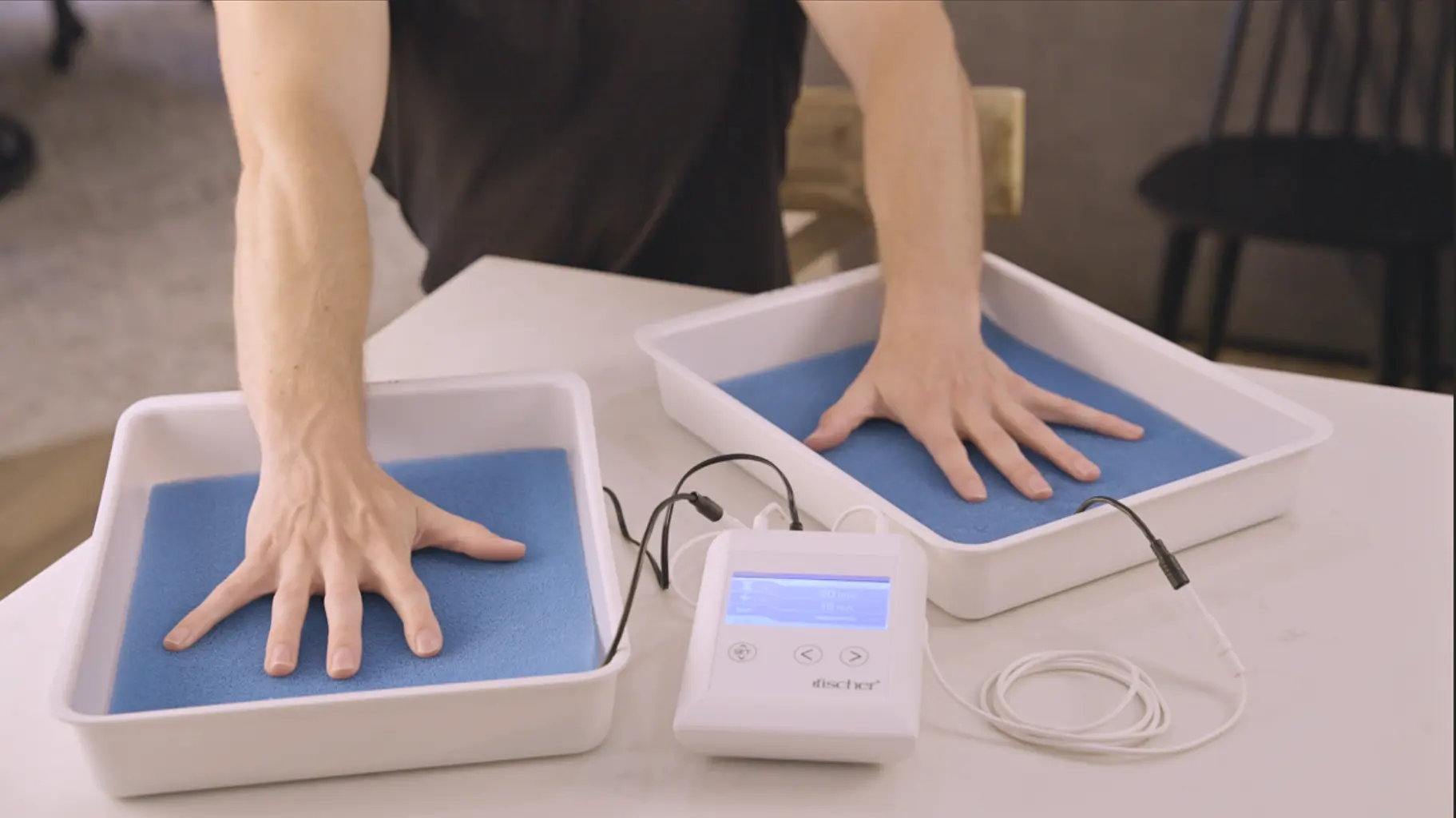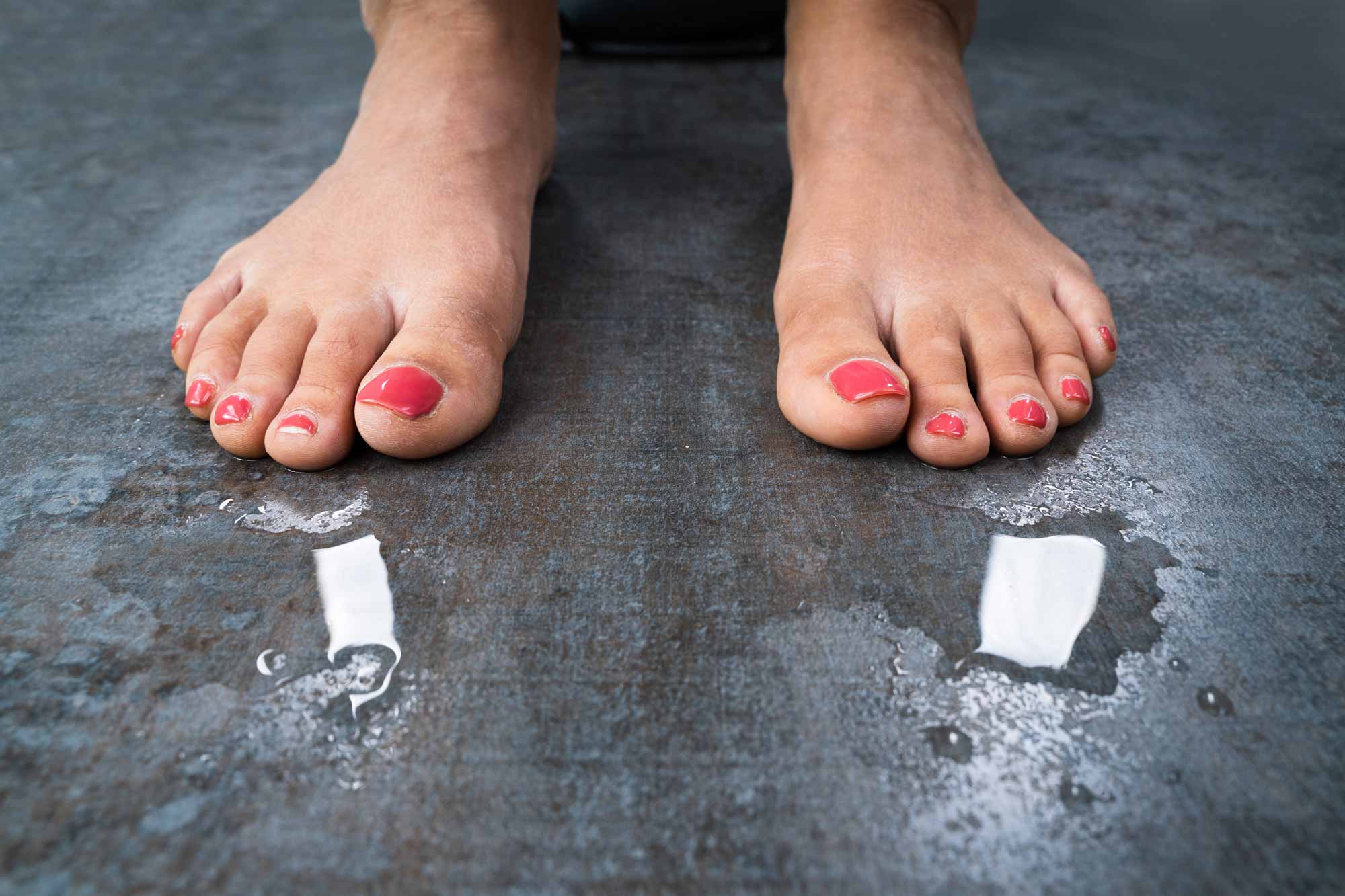Comprehensive Overview to Sweaty Hands Treatment: Proven Dermatology Approaches
Comprehensive Overview to Sweaty Hands Treatment: Proven Dermatology Approaches
Blog Article
Introducing the Intricacies of Excessive Sweating: A Comprehensive Guide to Diagnosis and Monitoring
Extreme sweating, medically known as hyperhidrosis, is a condition that affects a significant number of people and can have an extensive effect on their high quality of life. While sweating is a natural bodily feature, its overactivity in hyperhidrosis offers an one-of-a-kind collection of difficulties that frequently go beyond plain pain.

Comprehending Hyperhidrosis Causes
Hyperhidrosis causes can be credited to numerous variables such as genes, hormonal imbalances, and particular clinical conditions. Genes play a substantial role in primary focal hyperhidrosis, where individuals acquire the problem from their family participants. This kind of hyperhidrosis typically materializes in specific locations like the hands, soles of the feet, underarms, and face. Hormonal inequalities, especially an overactive thyroid gland or menopausal adjustments, can likewise set off too much sweating. Furthermore, certain clinical conditions such as diabetes, heart condition, and infections can result in secondary generalised hyperhidrosis. These underlying health concerns can disrupt the body's all-natural cooling system, creating the sweat glands to come to be overactive. Recognizing the root creates of hyperhidrosis is important in diagnosing and successfully managing this condition. By recognizing the particular factors contributing to too much sweating, health care companies can customize treatment plans to deal with the underlying cause, supplying alleviation and boosting the quality of life for individuals influenced by hyperhidrosis.
Identifying Hyperhidrosis Symptoms

Additionally, hyperhidrosis signs may show up in emotional and social distress, as people might feel embarrassed or distressed regarding their sweating, leading to evasion of social circumstances (Treatment for hyperhydrosis of hands). Additionally, duplicated episodes of extreme sweating can result in skin maceration, fungal infections, and a general decrease in self-worth
Diagnostic Process for Hyperhidrosis
Launching the analysis process for excessive sweating includes detailed assessment of the individual's case history and checkup. Asking about the beginning, duration, and causes of sweating episodes is vital to distinguish in between primary focal hyperhidrosis and second generalized hyperhidrosis. Clinical background ought to additionally include concerns concerning medicines, clinical conditions, and household background of hyperhidrosis.
During the physical exam, certain attention is paid to the locations influenced by sweating. The health care copyright may examine the level of sweating, check for indications of underlying problems, and review the impact of sweating on the individual's lifestyle. In addition, certain tests like the gravimetric examination, starch-iodine examination, or skin conductance dimensions may be conducted to measure the quantity of sweat generated.
Additionally, in situations where secondary hyperhidrosis is thought, additional tests such as blood tests, urine examinations, and imaging studies might be advised to recognize the underlying root cause of too much sweating. The analysis process aims to accurately identify the type and reason for hyperhidrosis to guide appropriate monitoring approaches.
Therapy Choices for Hyperhidrosis
When attending to excessive sweating, numerous therapy choices are offered to reduce symptoms and improve the person's lifestyle. The treatment approach for hyperhidrosis depends on the extent of signs and the patient's feedback to first therapies.
Topical treatments, such as aluminum-based antiperspirants, are frequently recommended as the initial line of defense for managing light situations of hyperhidrosis. These products function by plugging the sweat air check ducts, therefore reducing the quantity of sweat that reaches the skin's surface area. For individuals with more extreme signs, oral drugs like anticholinergics may be suggested to assist decrease sweating. These medicines can have side effects and are not appropriate for everyone.

Effective Management Techniques
To successfully handle hyperhidrosis, a personalized and detailed treatment plan tailored to the patient's specific demands and feedback to previous treatments is necessary. This strategy may incorporate a mix of healing strategies, consisting of way of life modifications, topical therapies, dental medicines, botulinum toxic substance injections, iontophoresis, and in extreme situations, surgical interventions like gland removal or sympathectomy. Way of life modifications such as wearing moisture-wicking apparel, utilizing antiperspirants, and practicing stress-reducing techniques can enhance medical treatments. Topical antiperspirants having aluminum chloride are frequently the first-line therapy, with stronger formulations readily available for resistant instances. Dental medications like anticholinergics might be recommended for generalised hyperhidrosis. Botulinum toxic substance injections are reliable for focal hyperhidrosis, offering temporary alleviation by blocking the launch of acetylcholine. Iontophoresis, involving using a low electric current to minimize sweat gland task, can be beneficial for both palmoplantar and axillary hyperhidrosis. Surgical choices are typically scheduled for severe, refractory situations find out here and call for cautious factor to consider of benefits and dangers. A multidisciplinary strategy involving skin doctors, health care doctors, and, if necessary, specialists, can optimize the administration of hyperhidrosis.
Conclusion
To conclude, hyperhidrosis is a problem defined by too much sweating, which can substantially influence an individual's quality of life. By understanding the causes, recognizing the symptoms, and undergoing the diagnostic process, doctor can efficiently manage this condition. Treatment options include topical medications, dental drugs, shots, and also operations in severe cases. With proper medical diagnosis and monitoring approaches, people struggling with hyperhidrosis can discover relief and improve their other total health.
Too much sweating, clinically known as hyperhidrosis, is a problem that impacts a significant number of people and can have a profound impact on their top quality of life. By determining the specific variables adding to excessive sweating, health care companies can customize therapy plans to deal with the underlying cause, supplying relief and boosting the high quality of life for people influenced by hyperhidrosis.
Hyperhidrosis, identified by too much sweating beyond what is required for controling body temperature, can considerably impact a person's quality of life. Asking concerning the onset, duration, and triggers of sweating episodes is vital to distinguish in between primary focal hyperhidrosis and additional generalised hyperhidrosis. Treatment for hyperhydrosis of hands and feet.In final thought, hyperhidrosis is a problem characterized by extreme sweating, which can greatly affect a person's top quality of life
Report this page